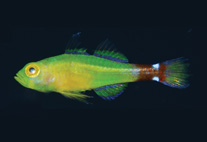Abstract
Nine anostracan biogeographical regions are defined for North America: Appalachia/Ozark, Southwest Arid, Great Plains, Coastal Plain, Neotropical, California, Cold Deserts, Beringia/Canadian Shield, and Transmontane. These regions are quantitatively defined using species distributions compared through Jaccard’s Coefficient of Community Similarity, and qualitatively defined using climate data, following the ecoregions protocol of the US Environmental Protection Agency for North America and the Universidad Nacional Autónoma de México for Mexico. Community assemblages are quantified using Fager’s Index of Recurring Species Groups. The average Fager’s Index for each bioregion, as well as the percentage of taxa co-occurring, generally decreases with the length of time the region has been available for colonisation. The strong Fager’s Index/colonisation time availability relationship suggests that the Monopolization Hypothesis of De Meester et al. may function at larger landscape scales.

